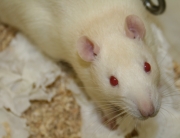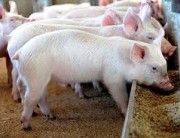At a commercial piggery in the US, we took 168 just-weaned pigs and fed them a typical diet for the piggery, containing soy and corn, for 22.7 weeks (over 5 months) until the pigs were slaughtered at their usual slaughter age. Half of the pigs were fed widely-used varieties of GM soy and GM corn (the GM-fed group) for this whole period and the other half of the pigs were fed an equivalent non-GM diet (the control group). The GM diet contained three GM genes and therefore three GM proteins. One protein made the plant resistant to a herbicide and two proteins were insecticides.
We chose a mixed diet instead of a single crop because this is usually what pigs and people eat. Regulators do not require animal feeding studies on mixtures of GM genes and their proteins, regardless of whether the genes are all “stacked” into the one plant or spread across several plants that are eaten in the same meal. We chose pigs because they have a similar digestive system to humans, and because some of the investigators had been observing reproductive and digestive problems in pigs fed GM crops. We took blood from the pigs a few days before they were slaughtered to do standard biochemistry tests. Autopsies were done by qualified veterinarians who didn’t know if a given pig was fed the GM diet or not, so their observations were completely unbiased.









































